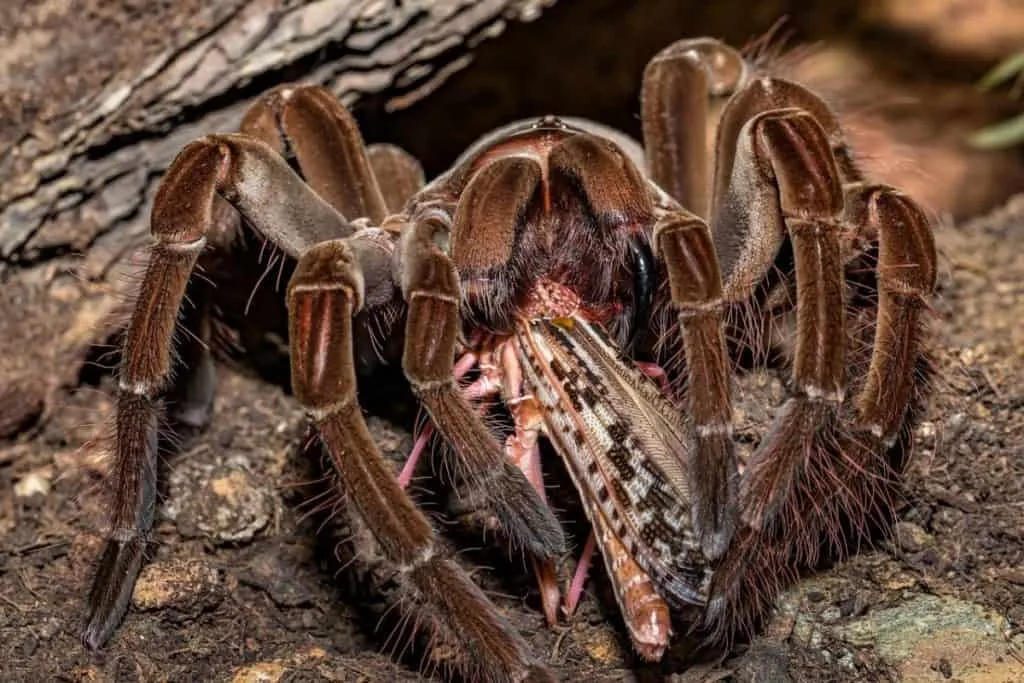What is a Goliath Bird Eater Tarantula?
The Goliath Bird Eater (Theraphosa blondi) is the world’s largest spider, a truly impressive creature that captures the fascination of many. Originating from the rainforests of northern South America, this tarantula is renowned for its size, impressive fangs, and unique characteristics. Despite its name, which is derived from early explorers observing them consuming small birds, the Goliath Bird Eater’s diet mainly consists of insects and other invertebrates. These spiders are not only massive but also possess a formidable presence, making them a topic of both awe and caution among arachnid enthusiasts. Their size is a standout feature, which, along with their other characteristics, distinguishes them in the vast world of spiders.
Size and Appearance
The Goliath Bird Eater can have a leg span reaching up to 12 inches, making it the largest spider in the world by mass and leg span. Their bodies can grow to be over 4 inches long. They are typically brown in color, with reddish hairs covering their legs and bodies. These hairs aren’t just for show; they can be flicked off as a defense mechanism, causing irritation to potential predators. The fangs of this spider are also notably large, used to inject venom and subdue prey. Their sheer size and robust build are testaments to their power and dominance in their natural environment. The visual impact of a Goliath Bird Eater is significant, making it an unforgettable sight for anyone who encounters it.
Habitat and Distribution
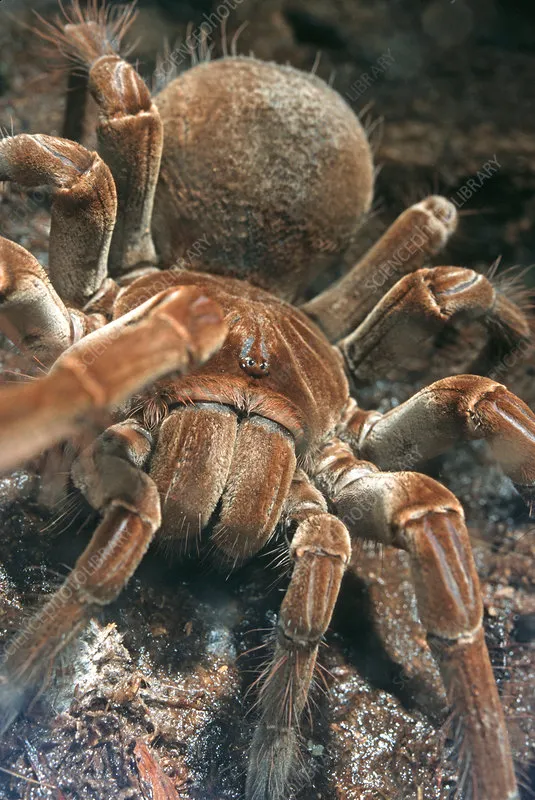
These spiders are native to the rainforests of northern South America, including countries like Brazil, Venezuela, Guyana, Suriname, and French Guiana. They thrive in humid environments, typically living in burrows that they construct or repurpose in the earth. These burrows provide shelter from the elements and protection from predators. The dense vegetation and the moist soil conditions of their habitat are crucial for their survival, offering both shelter and a plentiful supply of prey. Their natural environment is a critical factor in their life cycle, determining their behavior, diet, and overall well-being. These spiders play a significant role in their ecosystem, helping to control insect populations.
Diet and Feeding Habits
Despite their name, Goliath Bird Eaters primarily feed on insects and other invertebrates, although they have been known to consume small vertebrates like lizards, mice, and, occasionally, small birds. They are ambush predators, waiting patiently in their burrows or near their entrances for unsuspecting prey to come within striking distance. Once prey is close enough, they ambush it with their fangs and venom. The venom paralyzes the prey, allowing the spider to begin the digestion process. They use digestive enzymes to break down the prey before consuming it, a characteristic unique to tarantulas. Their dietary habits are diverse, reflecting their opportunistic hunting style and the variety of prey available in their habitat.
What do Goliath Bird Eaters Eat?
Their diet consists primarily of insects like crickets, beetles, and roaches, as well as other arthropods. In captivity, they are often fed a variety of these insects to ensure a balanced diet. Supplementing their diet with occasional small vertebrates can also be beneficial, provided they are of appropriate size and nutritional value. The diversity in their diet is essential for their health and growth. The type and frequency of feeding are influenced by the spider’s age and size, with younger spiders requiring more frequent feeding.
How they hunt
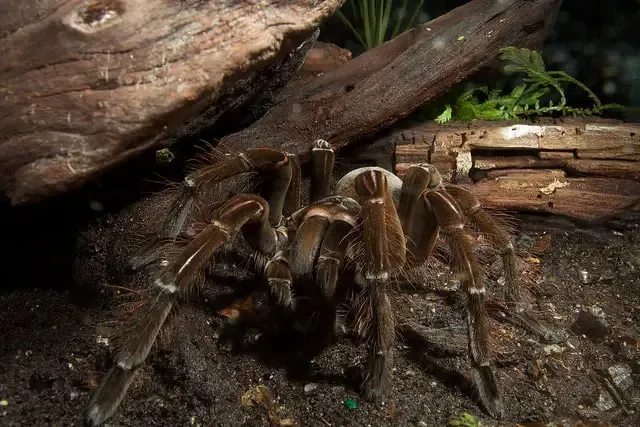
Goliath Bird Eaters are ambush predators, waiting for prey to come close. They have sensitive hairs on their legs that detect vibrations, which alert them to the presence of potential food. When prey is within range, they strike with incredible speed, injecting venom and using their large fangs to subdue the target. Their hunting strategy is a combination of patience and precision, ensuring they capture prey effectively. Their sensory abilities and quick reflexes are critical to their success in the wild.
Behavior and Temperament
Goliath Bird Eaters are generally considered docile compared to some other tarantula species. However, their size and powerful venom make them potentially dangerous. They are often reclusive, spending much of their time in their burrows. They are not aggressive by nature, but they will defend themselves if they feel threatened, typically by flicking urticating hairs from their abdomen. These hairs can cause intense itching and irritation. They also have the ability to bite, and their large fangs can deliver a painful bite. Their behavior is a complex interplay of natural instincts and environmental factors.
Lifespan and Breeding
Female Goliath Bird Eaters have a long lifespan, often living for 15 to 25 years, while males typically live for only 3 to 6 years after reaching maturity. Breeding involves a complex courtship ritual. The female lays eggs in a silk egg sac, which she diligently guards until the spiderlings hatch. The process of mating and reproduction is critical for the continuation of the species, ensuring that new generations of these impressive spiders are born. The life cycle of a Goliath Bird Eater, from birth to adulthood and eventual reproduction, is a testament to their resilience and adaptability.
Conservation Status
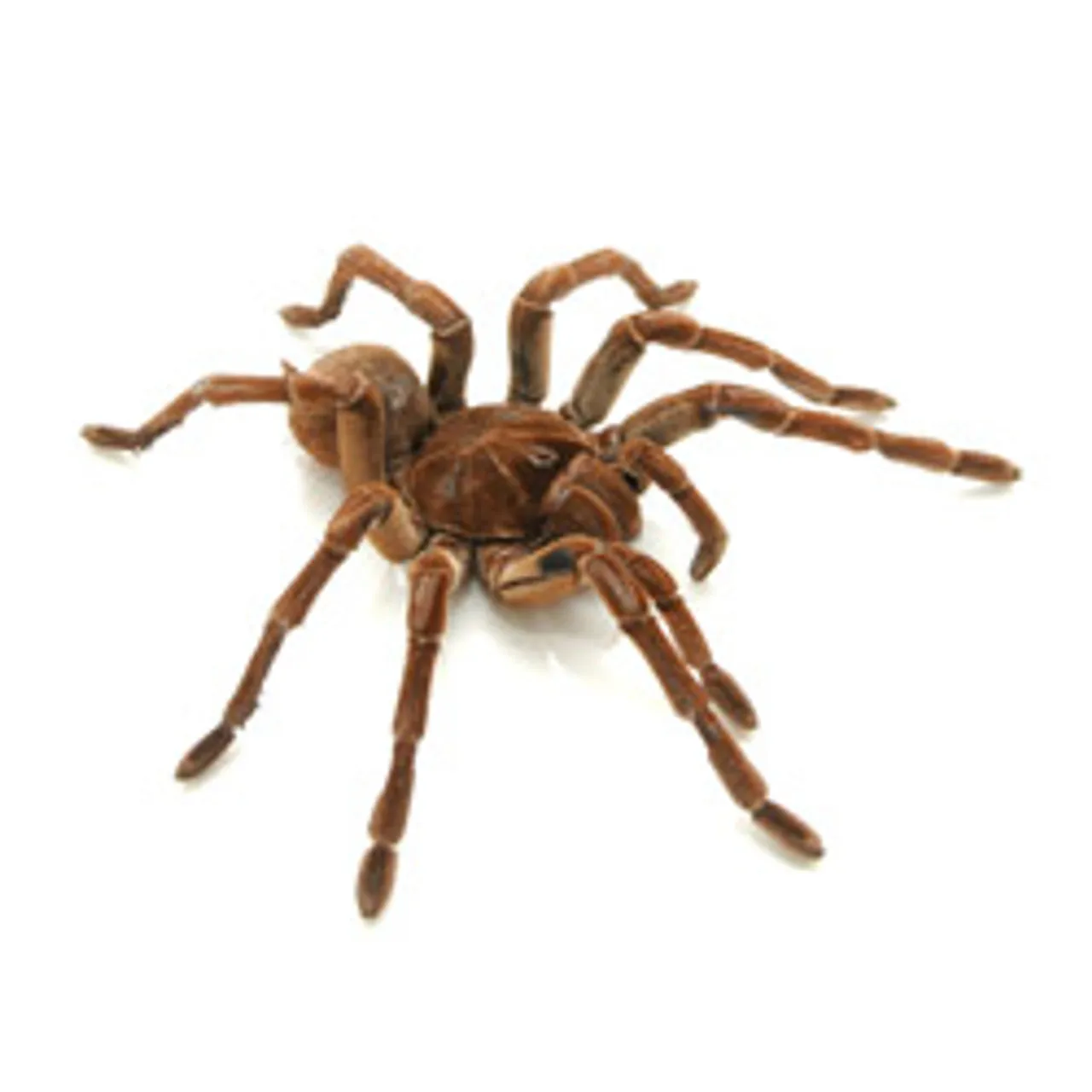
The Goliath Bird Eater is not currently listed as endangered, but like many species, they face threats due to habitat loss and collection for the pet trade. Conservation efforts include preserving their natural habitats and regulating the pet trade. Awareness of these threats is important for ensuring the survival of this species. The future of the Goliath Bird Eater depends on protecting its natural environment and implementing sustainable practices to manage the pet trade, where possible.
How to Care for a Goliath Bird Eater
Caring for a Goliath Bird Eater tarantula requires a significant commitment and understanding of its needs. It’s essential to create an environment that mimics their natural habitat, provides appropriate nutrition, and ensures safety. Understanding the specific requirements of these spiders is key to their well-being and longevity. Proper care not only ensures their health but also allows enthusiasts to appreciate these remarkable creatures responsibly. Before obtaining a Goliath Bird Eater, one should have the knowledge and resources necessary to meet its complex needs.
Creating the Right Habitat
The ideal enclosure for a Goliath Bird Eater should be large enough to accommodate its size, with a minimum of a 20-gallon long tank for juveniles and a 40-gallon breeder tank for adults. The enclosure should have a secure lid to prevent escape. It should also include a substrate that allows for burrowing, such as a mixture of peat moss, coconut fiber, and a little bit of soil. Hiding places like cork bark or artificial hides are essential for the spider to feel secure. The layout of the enclosure is critical to the spider’s comfort and well-being, providing both a place to burrow and a safe environment. The goal is to replicate the natural environment of the spider.
Humidity and Temperature
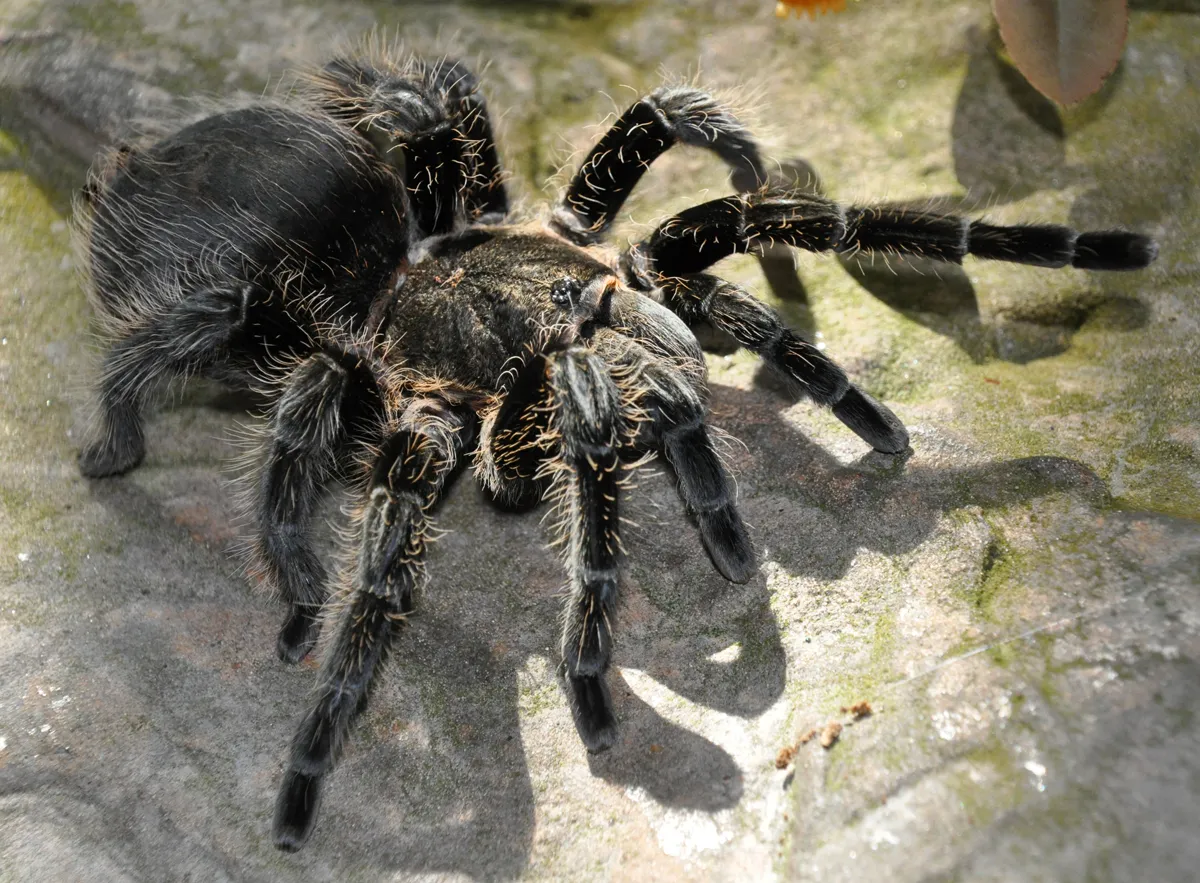
Maintaining the correct humidity and temperature levels is essential for the Goliath Bird Eater’s health. The ideal temperature range is between 75°F and 85°F (24°C and 29°C). Humidity should be kept between 75% and 85%, which can be achieved by misting the enclosure with water regularly and providing a water dish. Using a hygrometer and thermometer is essential for monitoring these conditions accurately. Proper humidity and temperature are vital for successful molting and overall well-being.
Substrate and Enclosure
The substrate is a critical component of the enclosure, providing the spider with a comfortable environment. It should be deep enough for the spider to burrow, typically around 6-8 inches. The substrate should be a mix of peat moss, coconut fiber, and a bit of potting soil to maintain humidity and support burrowing behavior. The enclosure should be kept clean to prevent the growth of mold and bacteria. Regularly removing any uneaten food and cleaning the enclosure is crucial for maintaining a healthy habitat.
Feeding and Watering
Goliath Bird Eaters should be fed live insects, such as crickets, roaches, and mealworms. The frequency of feeding depends on the spider’s age and size, with juveniles requiring more frequent meals. Adults can be fed every one to two weeks. It is crucial to ensure the prey is appropriately sized for the spider. A shallow water dish with fresh water should always be available. Regular monitoring of the spider’s feeding habits and water intake is important for ensuring its health. The health of the spider is closely tied to the quality and frequency of its meals.
Common Health Issues
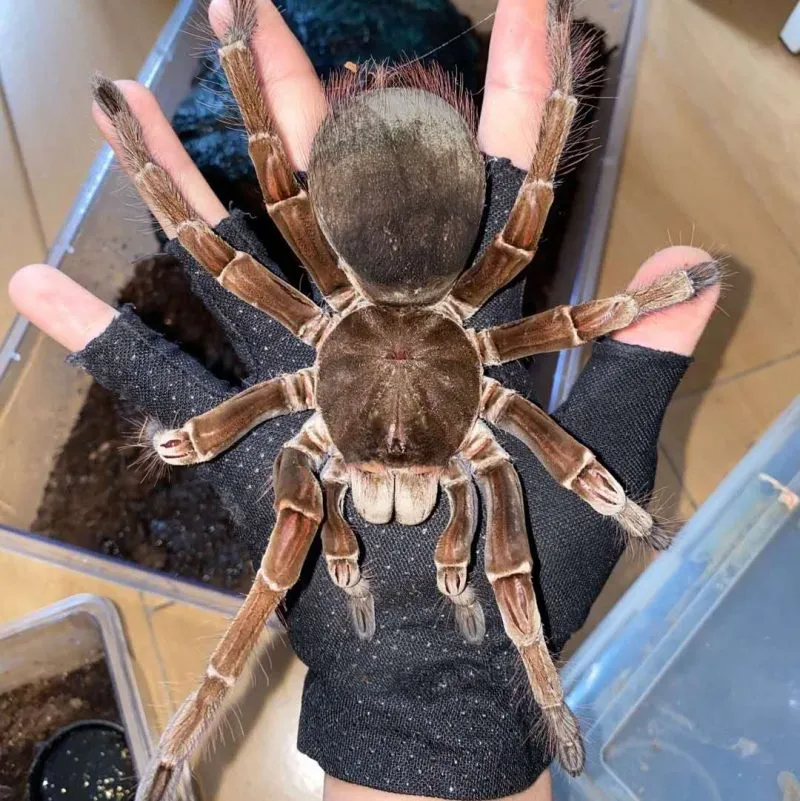
Common health issues for Goliath Bird Eaters include dehydration, molting problems, and parasitic infestations. Dehydration can be prevented by providing a constant supply of fresh water and maintaining proper humidity levels. Molting problems can arise if the humidity is too low or if the spider is stressed. Parasites are less common in captive environments but can occur. Regularly monitoring the spider’s health and appearance is crucial for detecting and addressing any issues promptly. Maintaining a clean and controlled environment minimizes the risk of health problems.
Handling and Safety Precautions
Handling a Goliath Bird Eater should be done with extreme caution, as they are capable of inflicting a painful bite and can flick urticating hairs that cause skin irritation. It’s best to avoid handling them unless absolutely necessary. If handling is required, do so carefully, wearing gloves to protect your skin from the urticating hairs. Always handle the spider close to a soft surface, such as a bed, in case it falls. Always wash your hands thoroughly after handling the spider or its enclosure. Awareness of safety precautions is crucial when working with this species. Safety is paramount when interacting with the Goliath Bird Eater.
